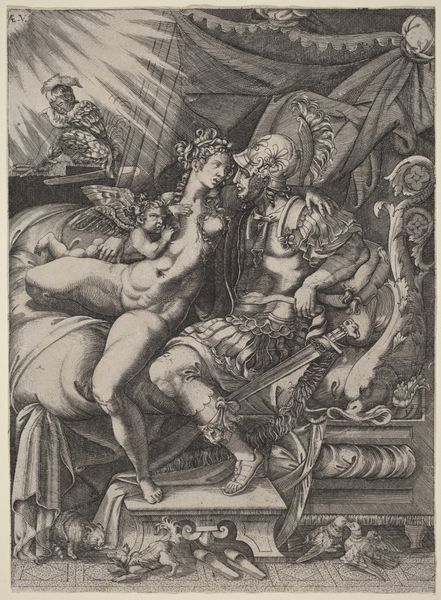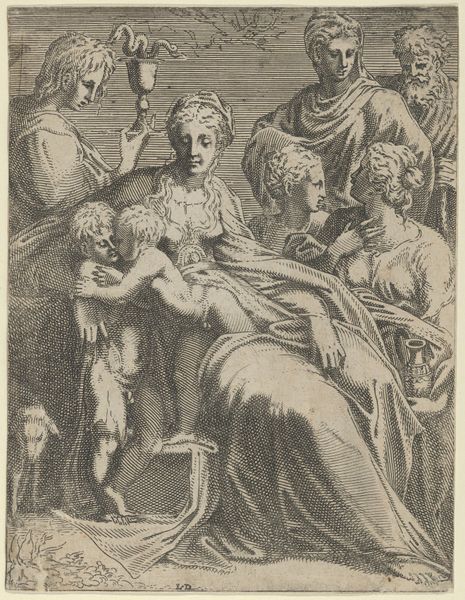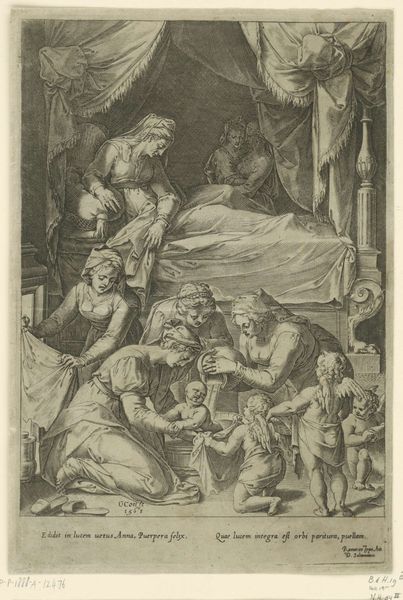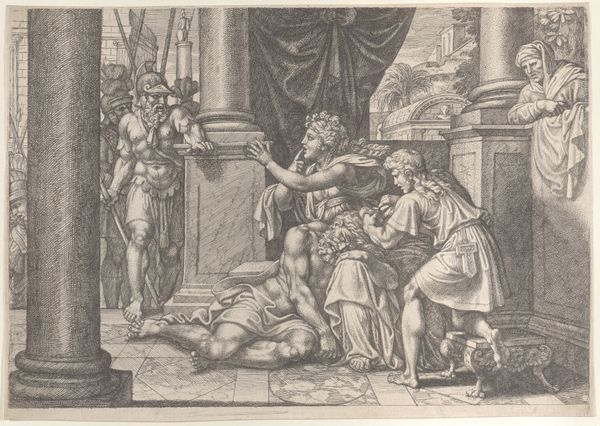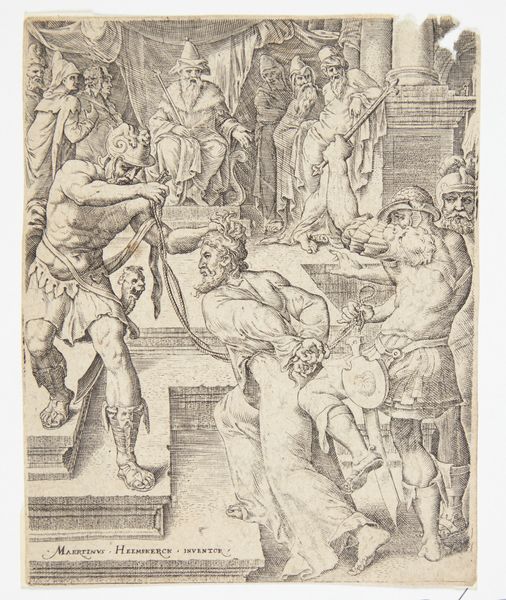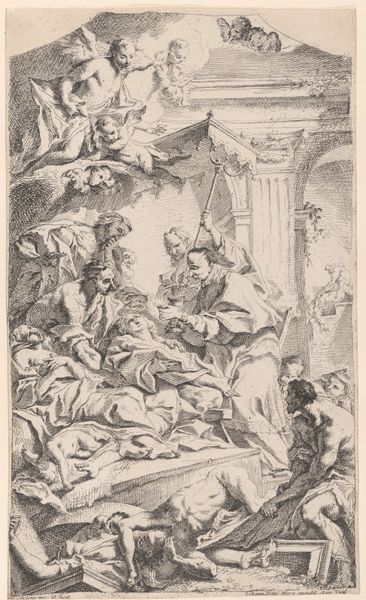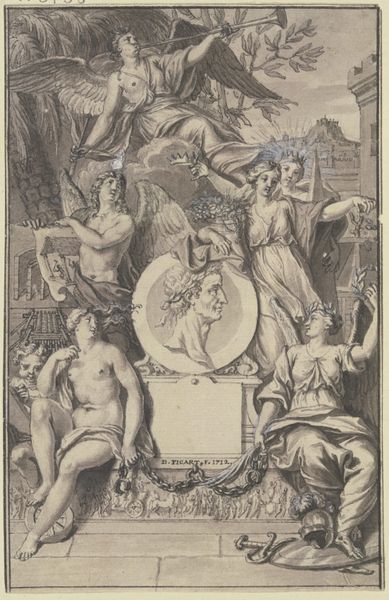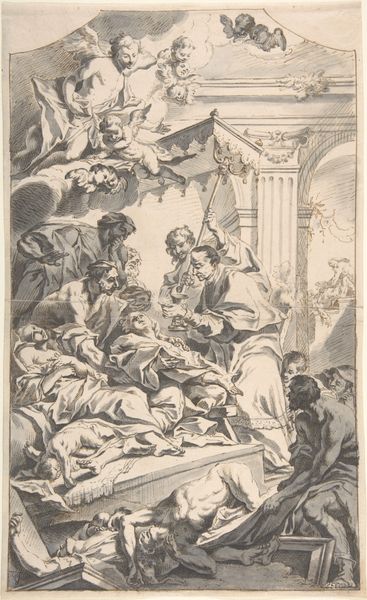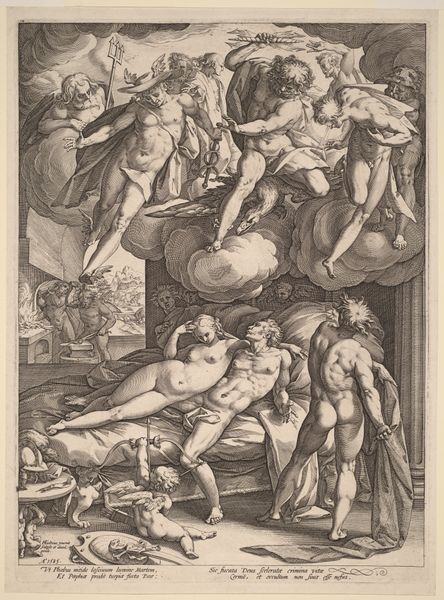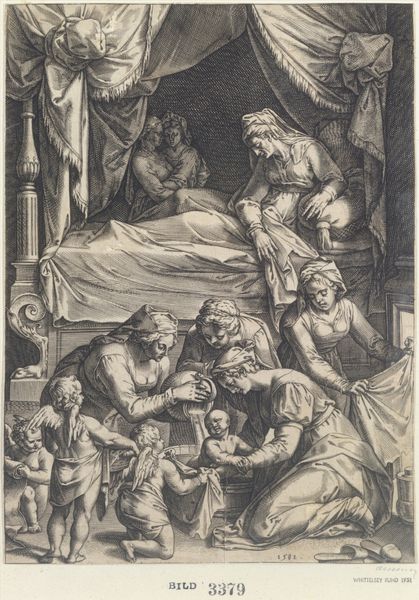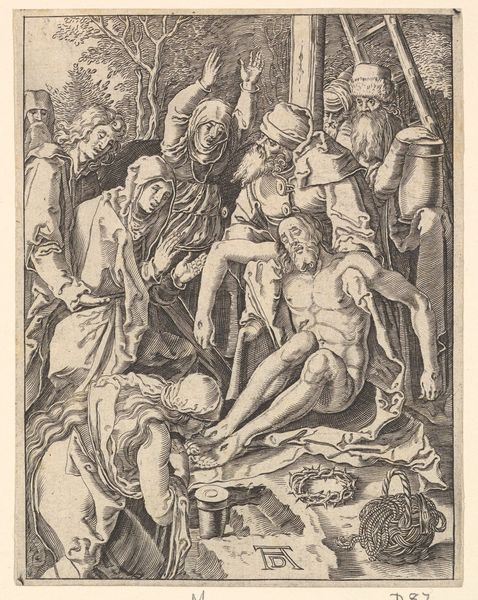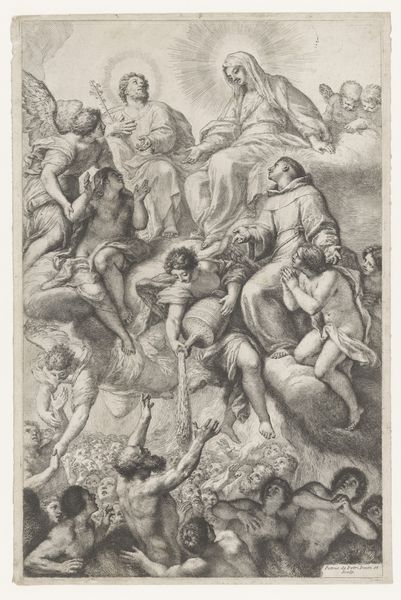
The Rich Man on His Deathbed, from The Parable of Lazarus and the Rich Man, plate 2 1551
0:00
0:00
drawing, print, ink, engraving
#
portrait
#
drawing
#
narrative-art
#
pen drawing
# print
#
pen illustration
#
pen sketch
#
figuration
#
ink
#
genre-painting
#
history-painting
#
northern-renaissance
#
engraving
Dimensions: Sheet: 9 13/16 × 7 13/16 in. (25 × 19.8 cm)
Copyright: Public Domain
Curator: Immediately striking. Look at this frenetic energy swirling around a central, prone figure. I can sense a drama playing out, an emotional culmination perhaps. Editor: Indeed. What grabs me right away is the medium itself—this is a pen and ink engraving, created in 1551 by Dirck Volckertsz Coornhert, titled "The Rich Man on His Deathbed, from The Parable of Lazarus and the Rich Man, plate 2." Think about the labor involved, the skilled hand etching those tiny lines to create this scene. Curator: The very story vibrates with potent symbolism. We witness, I suspect, the allegorical confrontation with mortality. Notice the man's pallid face as he lies on the bed; a physician attends him while other members of the wealthy man's retinue hold vessels containing medicine or prayer books in their hands. What emotions are legible in their postures? Editor: And look at the details: the elaborate clothing, the weighty fabric of the bedsheets. These were signifiers of status and power in Coornhert’s time. The social fabric is almost literally embedded in these materials; this is less about heaven and hell for me, and more about tangible inequalities in society and death coming to a wealthy home, presumably surrounded by riches acquired at the expense of the less fortunate. The material reality of wealth, then its inescapable cessation when approaching the end. Curator: Wealth juxtaposed with that sobering finality creates that dramatic tension. Perhaps the scene encourages reflection on our own values and how our material attachments reflect upon them. It may invite us to question what truly lasts beyond earthly existence. The etching offers, visually, a profound commentary on transience. Editor: Coornhert’s choice of printmaking also opens up interesting considerations. A print like this could be reproduced and disseminated widely, circulating these potent social and moral messages throughout a larger community than, say, a unique painting made for the church or a noble's collection. How was its message and form circulating together? Curator: Considering it's part of a parable only underscores the instructional intention. Its lasting power as a symbol lies in its ability to stir contemplation. Editor: Agreed. Examining Coornhert's rendering of earthly goods alongside human morality and material conditions allows me to appreciate this work beyond a religious reading. Curator: Precisely. We begin with this earthly stage for divine judgement and arrive with questions about life choices and historical materialism, all anchored in an indelible image.
Comments
No comments
Be the first to comment and join the conversation on the ultimate creative platform.
